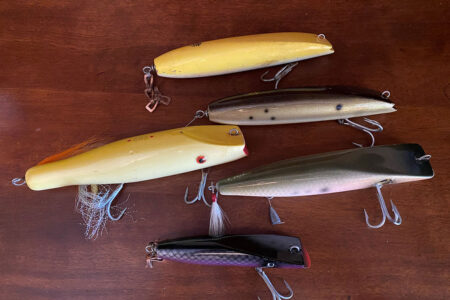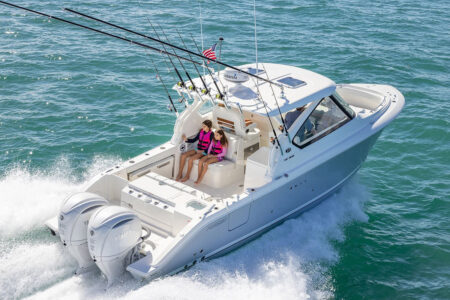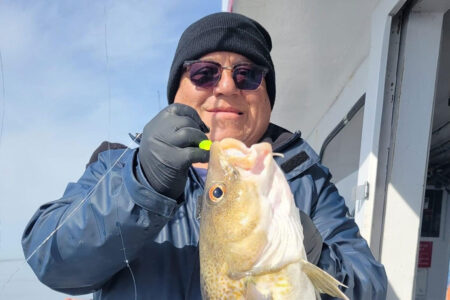Local wrecks and reefs provide the perfect habitat for big fluke during the summer months.
During spring, fluke migrate into our south shore bays and estuaries after spending the winter months in their offshore homes in depths from 200 to 500 feet. They arrive hungry and gravitate to the warmer shallower waters gorging themselves on grass shrimp, small crabs, spearing and all the food sources our local waters offer. However, when the calendar turns to summer and the water temperature in the bay begins to heat up, it’s time to head deep in search of big fluke—specifically to the reefs, wrecks and hard bottom that adorn the south shore of Long Island.
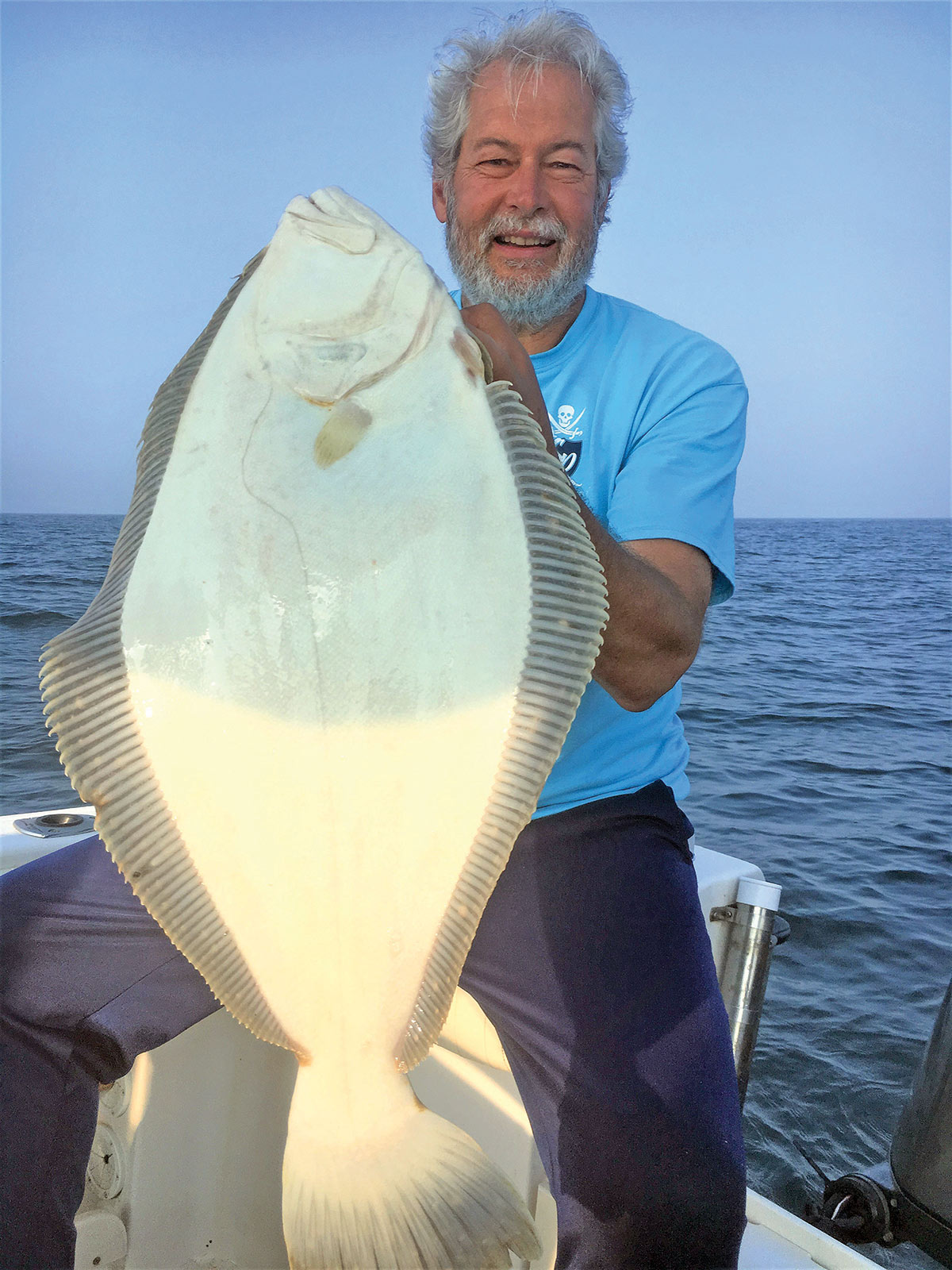
Find the Structure
Local wrecks and reefs are not only good areas for targeting sea bass, scup and tog, they also provide the perfect habitat for big fluke during the summer months. This is contrary to common belief that fluke prefer lying on the sandy bottom, partly concealed, waiting to ambush their prey. The summer flounder who patrol hard broken bottom are foraging on the smaller fish that live within the confines of the structure. Most fishing will be done in depths ranging from 40 to 70 feet of water, however, don’t be afraid to run deep especially later in the season. Areas such as the Cholera Banks, Angler Banks and Middle Grounds are all very productive as big fluke take residence on their hard, natural limestone bottom.
Finding the right honey holes requires you maintain a log with waypoints of the local structure in your area. Dialing into your color fishfinder is also important, and today’s advanced electronics have made this task much easier. CHIRP and Structure Scan sonar technology are excellent tools for identifying the bottom profile underneath your boat.
Move Around
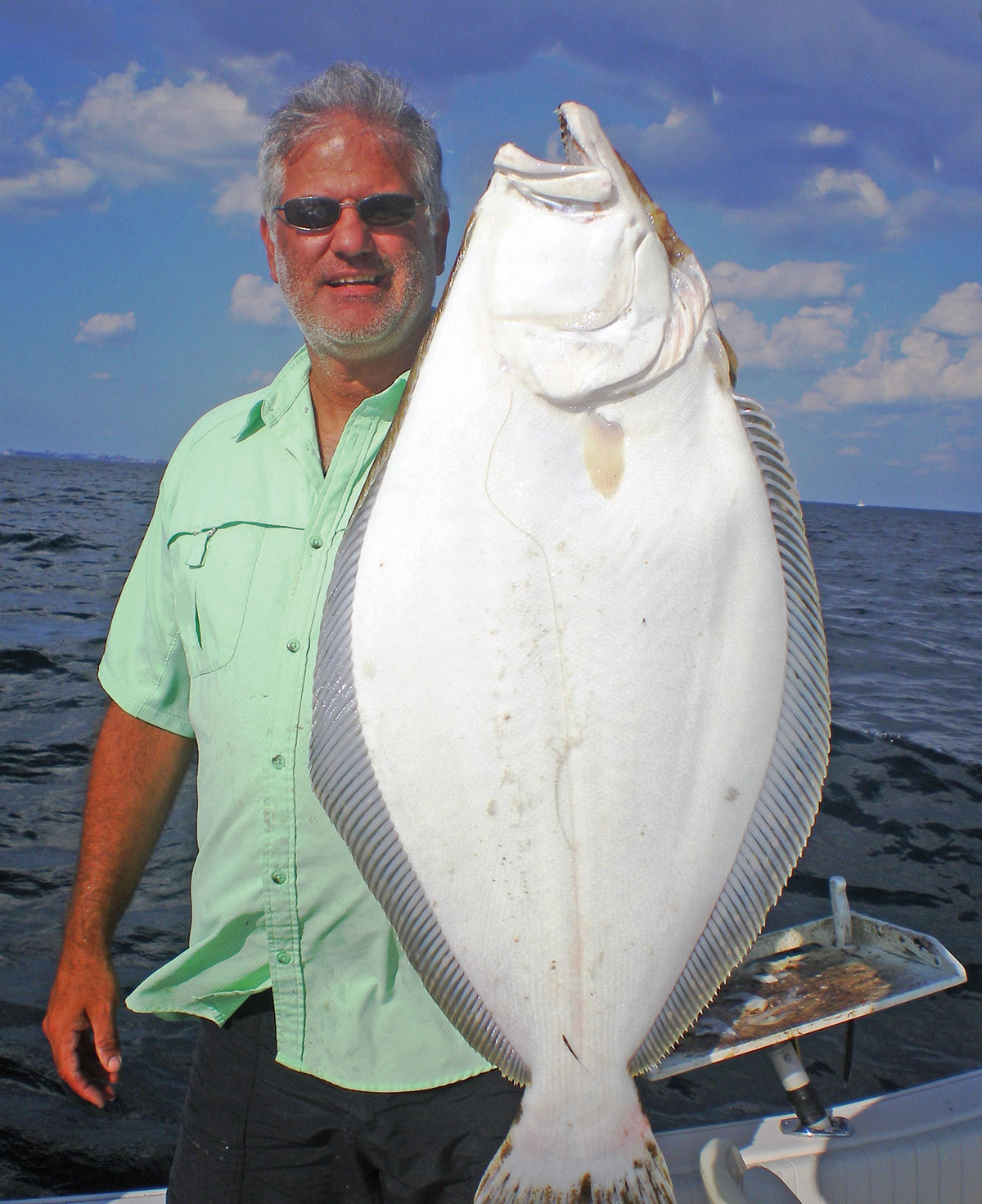
After punching in your GPS numbers and arriving at your destination, deciding where to fish depends upon factors such as current, tide and overall speed of the drift. Whether it is a wreck, reef or hard open bottom, you should explore different sections of the structure you wish to fish to find out exactly where the fluke are holding. Some days they can be found along the edges while other days they are holding tight to the structure. However, the drift conditions often dictate where you can most effectively fish. If the current is ideal .5 to .75 knots, then you can fish both the edges as well as the high spots without constantly getting snagged. If the current is swift, then focusing on fishing the edges or lower lying pieces will make fishing easier and minimize snags. If there is little to no current, then don’t hesitate to drift right over the real sticky stuff as often jumbo fluke lurk right in the rubble.
When it comes to fluking, you must be patient and work different areas until you find a body of fish. Work various depths and structure type until you start to catch. If you have caught a nice keeper or two quickly hit the MOB (man overboard) button on your GPS to lock in the zone. Fluke are territorial and you want to short drift that area to maximize your catch potential. That said, my rule is to drift for 600 to 750 feet then run back just past the MOB point and do the same drift again. You can drift a little further if you are still catching, but you want to work as tight an area as possible. I continue this pattern until the bite wanes or if the size of the fluke are all shorts. Then I go explore another area.
Lighten Up
Today’s fluke fishermen have become very discerning with regard to the tackle they use. Like most trends in saltwater fishing the rods and reels are becoming lighter, which heightens the fun factor especially when tangling with a nice fluke in deep water. However, your tackle should have enough backbone to handle bucktails up to 6 ounces and up to 10 ounces of lead. A 6-foot, 6-inch or 7-foot rod, preferably fast to extra fast action, paired with either a baitcaster or spinning reel filled with 30-pound braid makes for an ideal combo. Braid is a must, especially if bucktailing, as it is extremely thin, sensitive and almost void of stretch. Go with a little heavier braid when fishing structure as you increase the chances of saving your rig from a snag.
Bucktails Bag Big Fluke
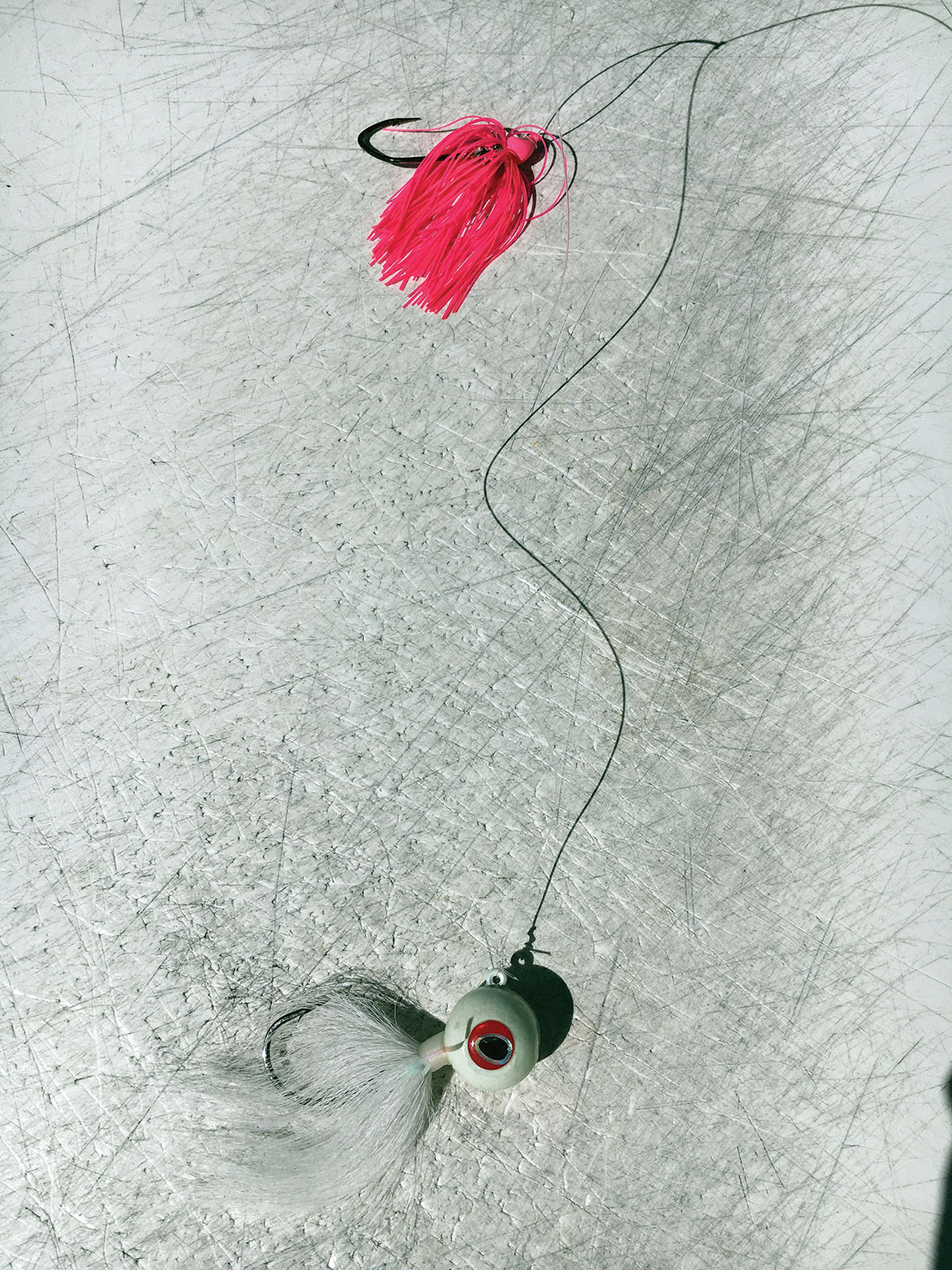
Fluke are aggressive predators and can’t resist a well-presented moving bait. A properly jigged bucktail tipped fresh fish bait or Gulp is just the ticket for enticing big ocean fluke. The key to bucktailing is going as light as possible to maintain contact with the bottom. Stay as vertical as possible when working the bucktail. If your line has too much scope you are simply dragging your bait, thus minimizing the presentation of the bucktail. And your likelihood of getting hung up on the bottom is greatly increased. When this occurs reel up, toss your rig up current and resume bouncing your bucktail over the structure. Keep in mind you are fishing sticky bottom, so be prepared to donate a few rigs.
Bucktails can range from 2 ounces on calm days and up to 6 ounces when there is a stronger current. When it comes to shape, I prefer round lead heads as they are more forgiving around structure. As for color, the usual suspects – white, chartreuse and pink – all work well. Some of the newer darker color combinations on the market are also effective as they mimic the smaller fish that call the structure home. Have a variety of colors and sizes on board as some days fluke can get finicky.
The rig consists of a bucktail tied directly to 40-pound leader material (Fast clips can also be used and makes switching out bucktails easier.). About 12 inches above the bucktail, a large dropper loop is created in the leader to which we affix a teaser along with a 4/0 octopus hook. Teasers come in many shapes, sizes and colors. Some even come with hooks. Silicone, bucktail or squid skirts all work extremely well as do small bucktails under 1/2 ounce. Keep a variety in your tackle box and experiment to see what is working best that day.
Bait or No Bait
One of the great debates among today’s fluke anglers is whether to use fresh bait or simply fish Gulp. I am more of an old school guy growing up fishing fresh cut fish baits, but I must admit that the Gulp works, and it can be used alone or in conjunction with fresh bait. That said, bucktails can be tipped with either Gulp (The 6-inch grubs are fluke candy.) or fresh strip baits such as legal sized fluke belly, sea robin or bluefish. Porgy strips are deadly too, just make sure to scale them first. These fish baits are preferred over the typical squid/spearing combo as they more closely match the hatch when fishing structure. If you wish to fish a longer strip bait, a stinger hook should be added to the bucktail hook. This allows for a more natural presentation while significantly increasing your hook up rate. As for the teaser, tip it with a smaller strip of fresh fish bait or smaller Gulp grub or minnow than used on the bucktail. This results in a more predatory presentation, as if the bucktail is chasing the teaser, which will attract the attention of any nearby fluke.
Play Chicken
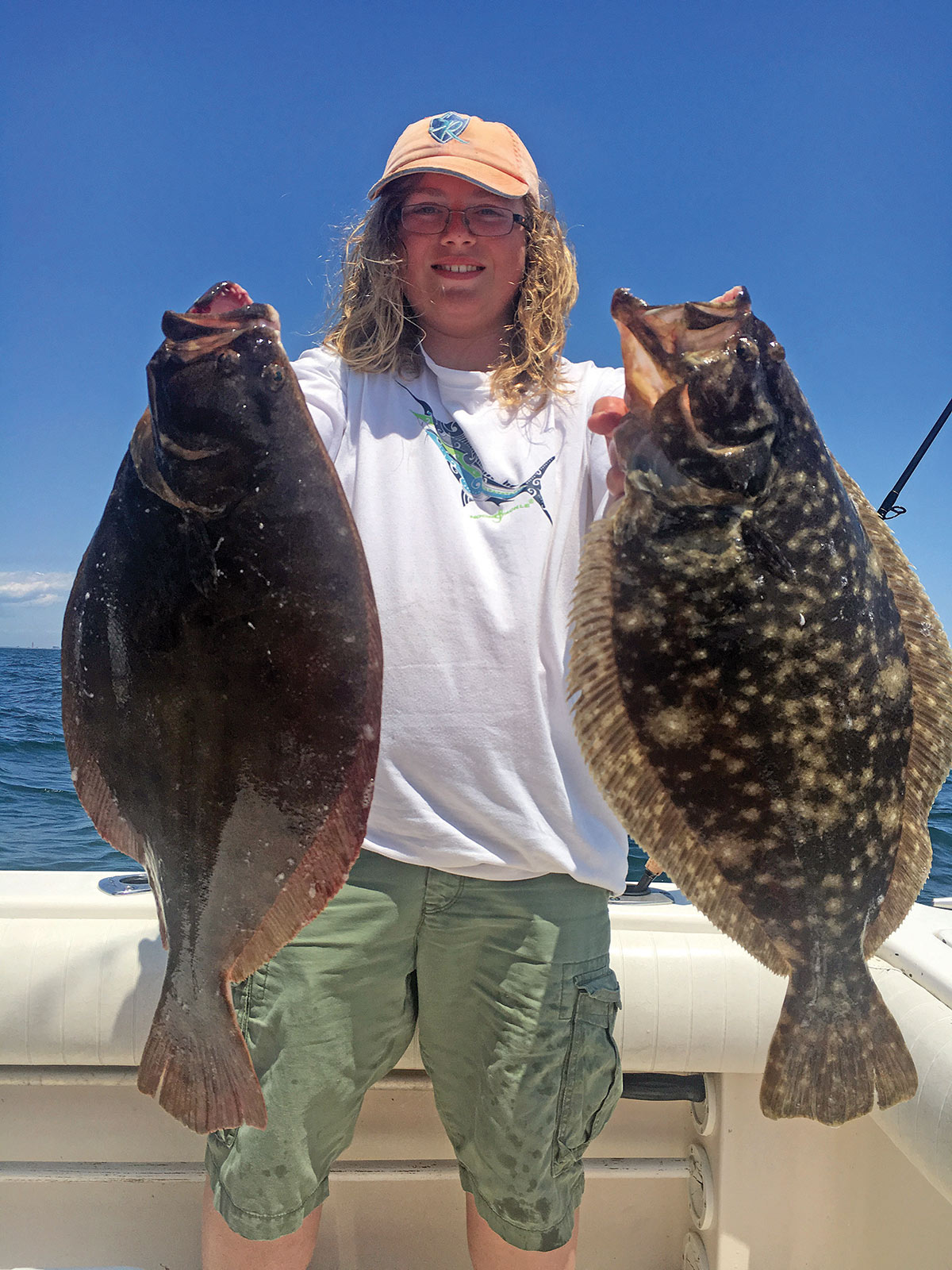
There are days when the current is swift and drift too fast for a 6-ounce bucktail. When such conditions arise, I turn to the old tried and true hi/low (aka Chicken) rig. This set up allows you to fish two teasers (Weighted silicone skirts are my preference.) and a heavier weight. Simply tie a large dropper loop just above the sinker and another 12 to 18 inches above the lower hook. The deeper the water, the greater distance between the hooks. The beauty is you work this rig the same way you would a bucktail, so it provides a great presentation to a hungry fluke. And, it allows you to fish sinkers in excess of 10 ounces to maintain a vertical presentation no matter how fast the drift.
The added benefit of fishing structure for fluke during summer months is the opportunity to catch sea bass, scup, ling and triggerfish without having to run to a new location. These wreck denizens are fun fighters on light tackle and make for excellent table fare. They can often be caught on the same fluke rig or simply switch over to a hi/low rig with 3/0 octopus hooks tipped with squid or clam.
Editor’s Note: The author is captain of Sea Rogue Charters (www.searoguecharters.com), based out of Freeport, NY.

